Salmon season is here, but what does that mean for Whatcom County? Here’s what to know
Fall is the time many see and fish for salmon in Whatcom County creeks as they return home to spawn, laying their eggs and dying.
There are five species of salmon in the Pacific Northwest: chinook, sockeye, coho, pink and chum, according to the U.S. Department of Agriculture. All five can all be found in Whatcom County, according to Sarah Brown, the stewardship program manager at Nooksack Salmon Enhancement Association.
“Every late summer into winter, we have adult Pacific salmon returning from the ocean and swimming up rivers and creeks to spawn. This is the stage of the salmon life cycle that most people are familiar with because they get to see huge, colorful salmon in their backyards and local parks,” Brown wrote in an email to The Bellingham Herald.
In addition to the five species of Pacific salmon, Whatcom County also sees steelhead trout, which are an anadromous or “sea-run” type of rainbow trout that spend much of their lives in the ocean similar to salmon, Gunnell wrote in an email to The Herald.
Here’s when and where you can see salmon in Whatcom County:
Chinook salmon
Chinook salmon are the largest species of Pacific salmon and are also known as king, tyee and blackmouth salmon. Some chinook salmon grow as large as 100 pounds, but typically weigh between 10-15 pounds.
Chinook are the first salmon to travel through the Nooksack, Whatcom Creek and other local watersheds starting in September, according to Brown.
Chinook can likely also be seen at Chuckanut Creek, according to the city of Bellingham.
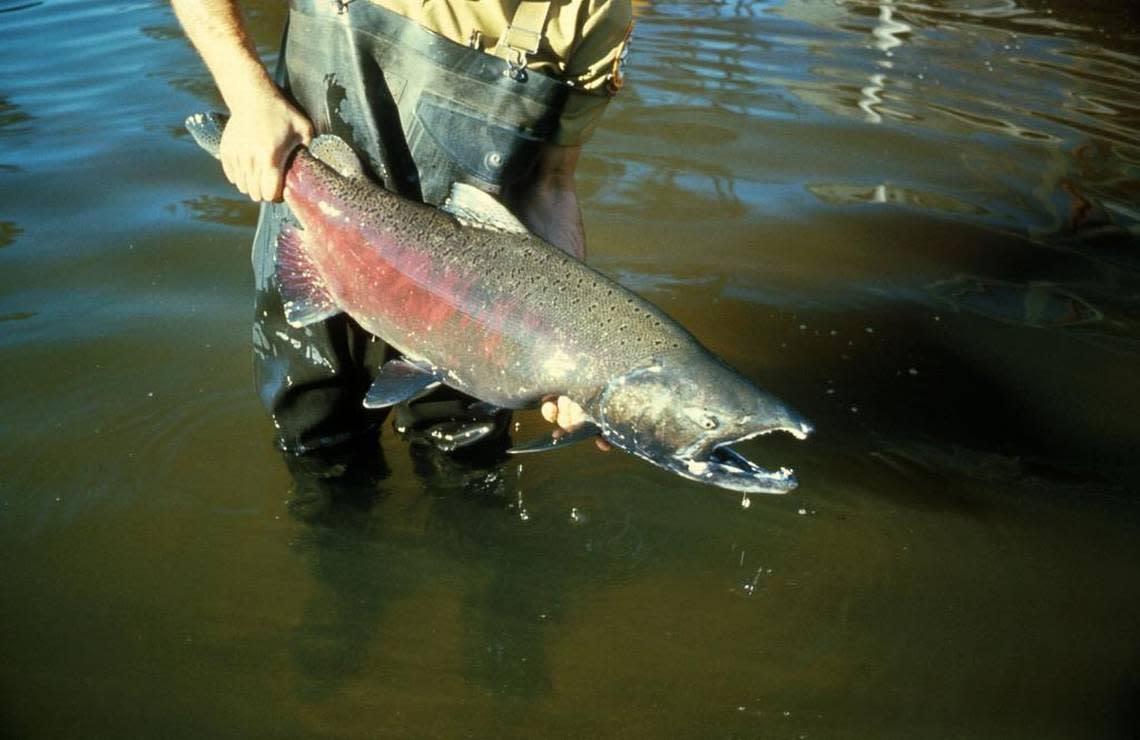
Sockeye salmon
Sockeye salmon are also called red salmon, blueback or kokanee salmon and are recognized by their red color. Sockeye salmon have an average size of 5-8 pounds, but larger fish can weigh about 15 pounds.
Sockeye follow the early runs of Chinook up rivers and will have a small run to the Nooksack and a large return to the Skagit River in July and August, Gunnell wrote.
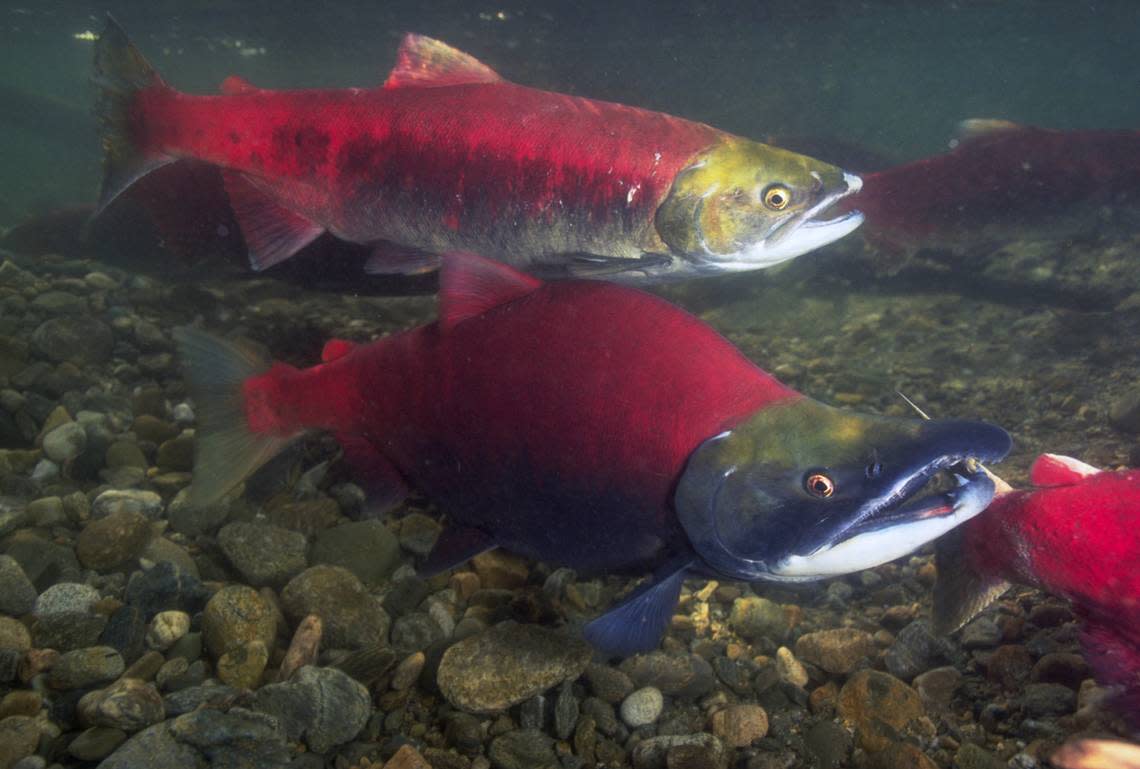
Coho salmon
Coho salmon are also known as silver salmon and are a common sport fish in Washington. They typically weigh between 6-12 pounds but can be as large as 31 pounds.
Coho are among the last salmon to swim up rivers, Gunnell wrote.
They are the most likely to be seen this season in Whatcom County, as they are the most abundant species this year and will have their peak during September and October, according to Gunnell. Coho will run through the Nooksack through late winter, Gunnell wrote.
Coho can likely also be seen at Chuckanut Creek, according to the city of Bellingham.
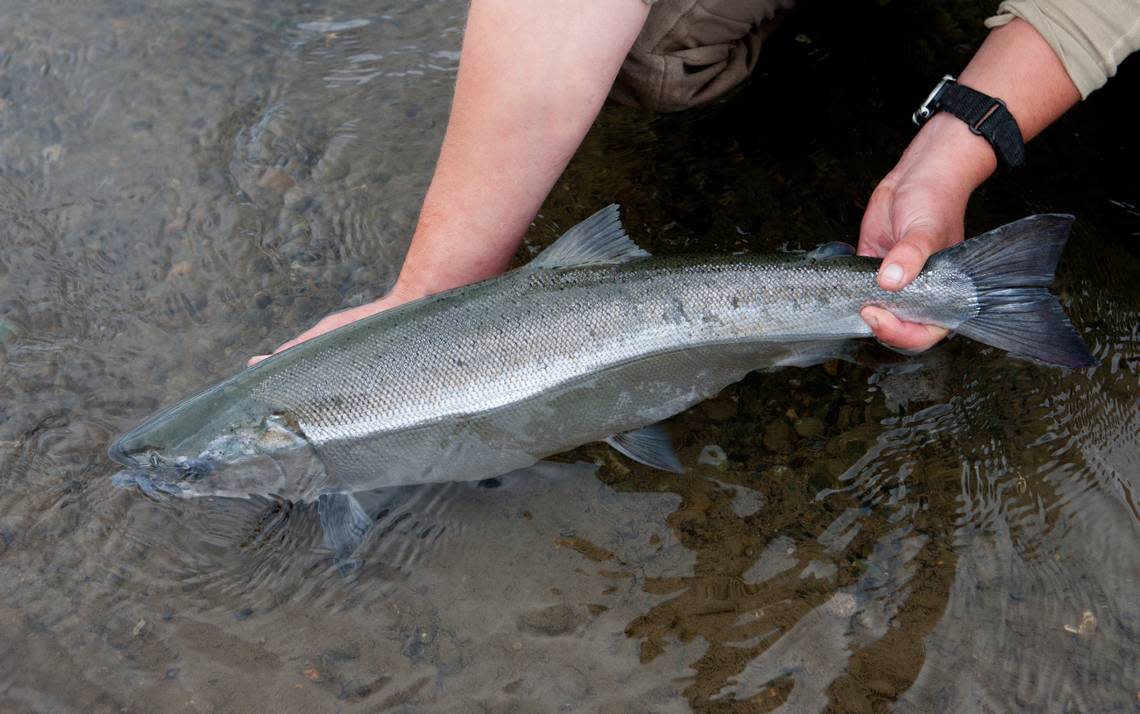
Pink salmon
Pink salmon are also called humpy or humpback salmon as they develop a large hump on their backs, and according to the U.S. Department of Agriculture, pink salmon runs only occur during odd-numbered years in Washington.
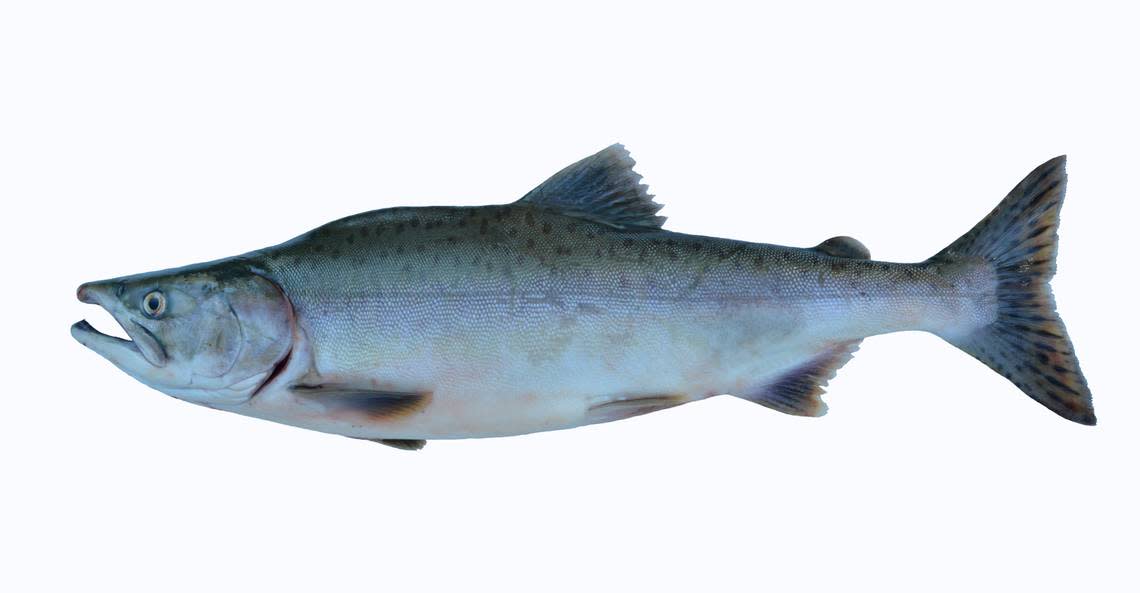
Chum salmon
Chum salmon are also named dog or calico salmon. The species develop large, canine-like teeth during spawning, and typically grow to 10-15 pounds but can be as large as 33 pounds.
Chum salmon are among the last salmon to swim up rivers and will run in the Nooksack River through late winter, Gunnell wrote.
Chum salmon can likely also be seen at Chuckanut Creek, according to the city of Bellingham.
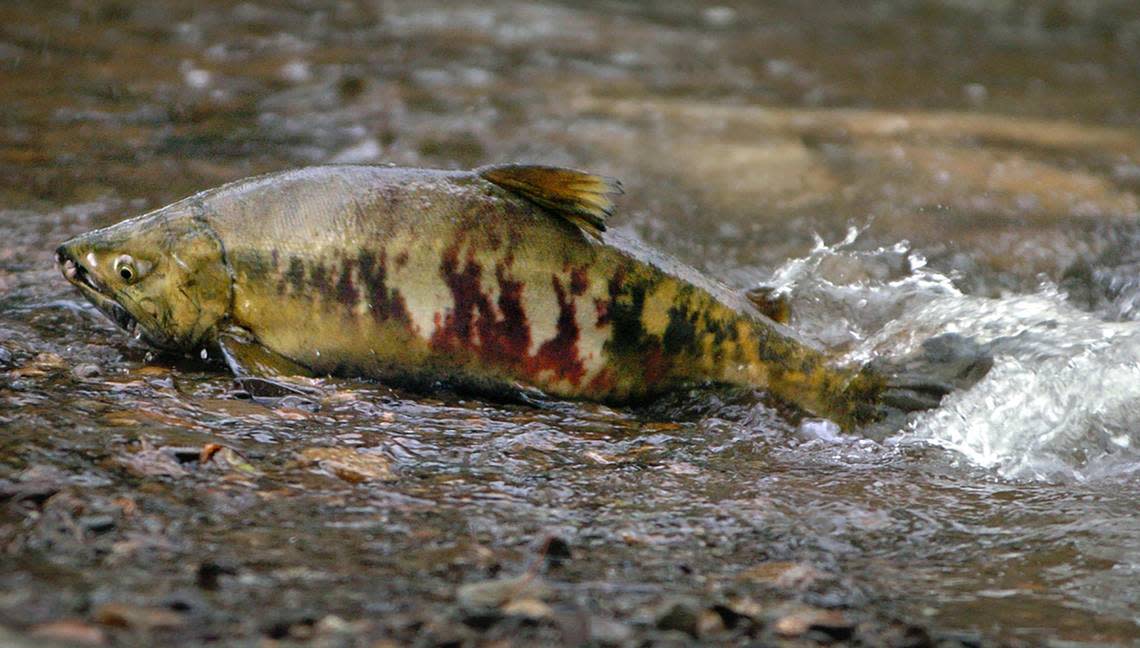
Where can I learn more about salmon in Whatcom County?
For those looking to see salmon this year, the Nooksack Salmon Enhancement Association will host weekly Salmon Sightings events across the county starting on Oct. 29. These free, open-house educational events include games, prizes and light refreshments, as well as the chance to view salmon during their seasonal run.
It also posts salmon sightings on its Facebook and Instagram pages.
Whatcom County is also home to four fish hatcheries that offer an educational look at the salmon life cycle. The Washington Department of Fish and Wildlife has hatcheries in Bellingham, Lake Whatcom, Baker Lake and Kendall Creek.
And, the city of Bellingham records yearly spawning surveys and smolt trap data that is available on its website to help track and predict salmon runs.
What do salmon eat, and what animals eat salmon?
Salmon eat different types and sizes of food as they grow and swim into different waters.
“As young parr and smolts in freshwater, salmon eat insects, transitioning to zooplankton and small marine invertebrates like krill, crab larvae and amphipods as they enter salt water. As salmon grow larger, many of them heading out into the ocean, they increasingly feed on small forage fish such as herring, anchovies, smolt and sandlance, as well as squid and other small fish,” Gunnell wrote.
When salmon return to the Salish Sea they eat large amounts of fish to stock up on their energy reserves before they swim back to freshwater to spawn. Once they are back in freshwater salmon do not feed, according to Gunnell.
Many predators eat salmon, making their travels and run a risk. The main salmon predators in the Whatcom County area include the endangered Southern Resident orcas, eagles, seals and otters, Brown wrote.
Salmon fishing in the Nooksack River
The Washington Department of Fish and Wildlife has strict fishing dates and limits for the Nooksack River. Fishing regulations and seasons depend on the part of the Nooksack River.
In 2022, Whatcom Creek is open for chinook Saturdays through Mondays only, Sept. 17-26. And fishing is closed for any other species on chinook open days.
▪ From the Lummi Indian Reservation boundary to the yellow marker at the FFA high school barn in Deming: the daily limit is four fish, two of which can be coho salmon through Dec. 31.
▪ From the yellow marker at the FFA high school barn to the confluence of north and south forks: fishing season runs from Oct. 31 to Dec. 31, with a daily limit of four fish, two of which can be coho salmon.
▪ From the south fork of the Nooksack to Skookum Creek, fishing season is open from Oct. 1 through Dec. 31 with a daily limit of six fish, including no more than two coho salmon, or two hatchery chinook or one of each species.
▪ On Nooksack’s north fork from the Highway 9 bridge to Maple Creek, fishing season is open from Oct. 1 through Nov. 30 with a daily limit of four fish, two of which can be coho salmon.
